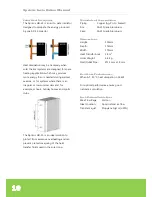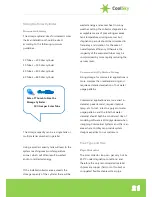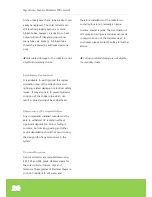
19
horizontally, as the heat pipes will not
function.
Drain Back Systems
In a drain-back configuration the collector
must be positioned with 2cm of drop per
meter.
Installation Angle
The solar collector must be installed at an
angle of between 20-80
o
from horizontal to
ensure optimal heat pipe operation. For
optimum summer performance for Domestic
Hot Water applications, as a rule of thumb
the installation angle is typically set as :
Install Angle = 0.7 x Location Latitude
In areas prone to hail, a minimum angle of
45
o
is advisable. Similarly, in areas prone to
high snow loads, 45
o
or higher is advisable
to encourage the snow to fall off the
collector surface.
Avoid Shade
Collectors should be located so that shading
does not occur between 9am - 3pm which
are the peak sun hours.
Partial shading due to small objects such as
antennas and small flues is not a problem.
If installing multiple rows of collectors
consider the shading of collectors on the
row behind (especially in the winter).
Location of Collector
The collector should be positioned as close
as possible to the storage tank to avoid long
pipe runs.
System Sizing
Domestic System Sizing
For residential domestic water heating
applications basic “rules of thumb” exist that
allow system sizes to be calculated using the
methodology outlined below.
For space heating or commercial water
heating system the sizing calculations are
more complicated. The CoolSky Technical
Design Team can assist our customers with a
free design service for these systems. Using
special state-of-the-art Solar Thermal design
packages we can assist in the design and
optimisation of all Solar Thermal systems no
matter what the size.
How much hot water is needed?
Ideally the exact daily hot water demand
should be provided through metering.
However, as this is not always available, the
daily demand can be estimated using the
following guidelines :
Cool Tip
Rule of Thumb for Optimum
Installation Angle
0.7 x Location Latitude
















































